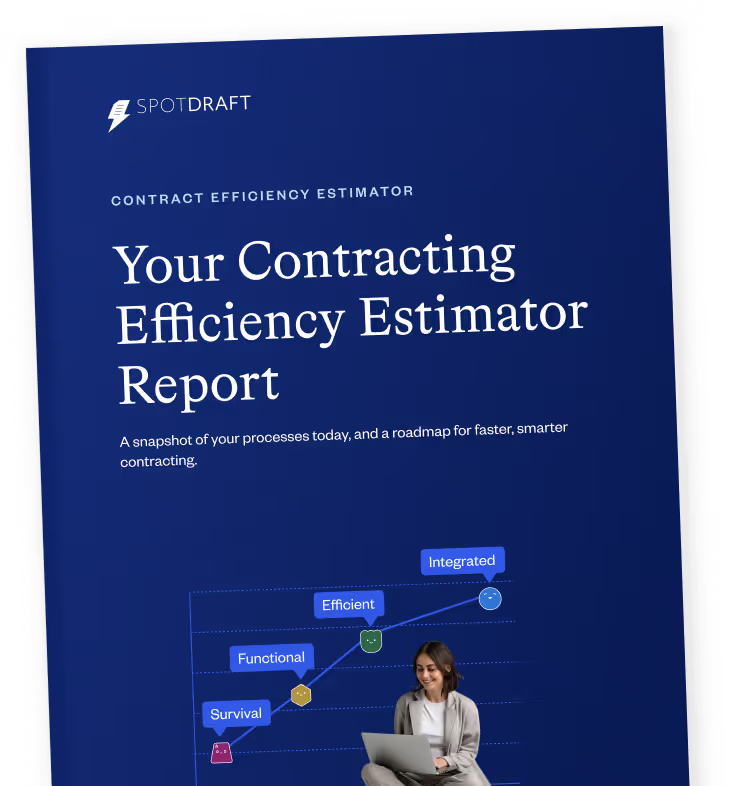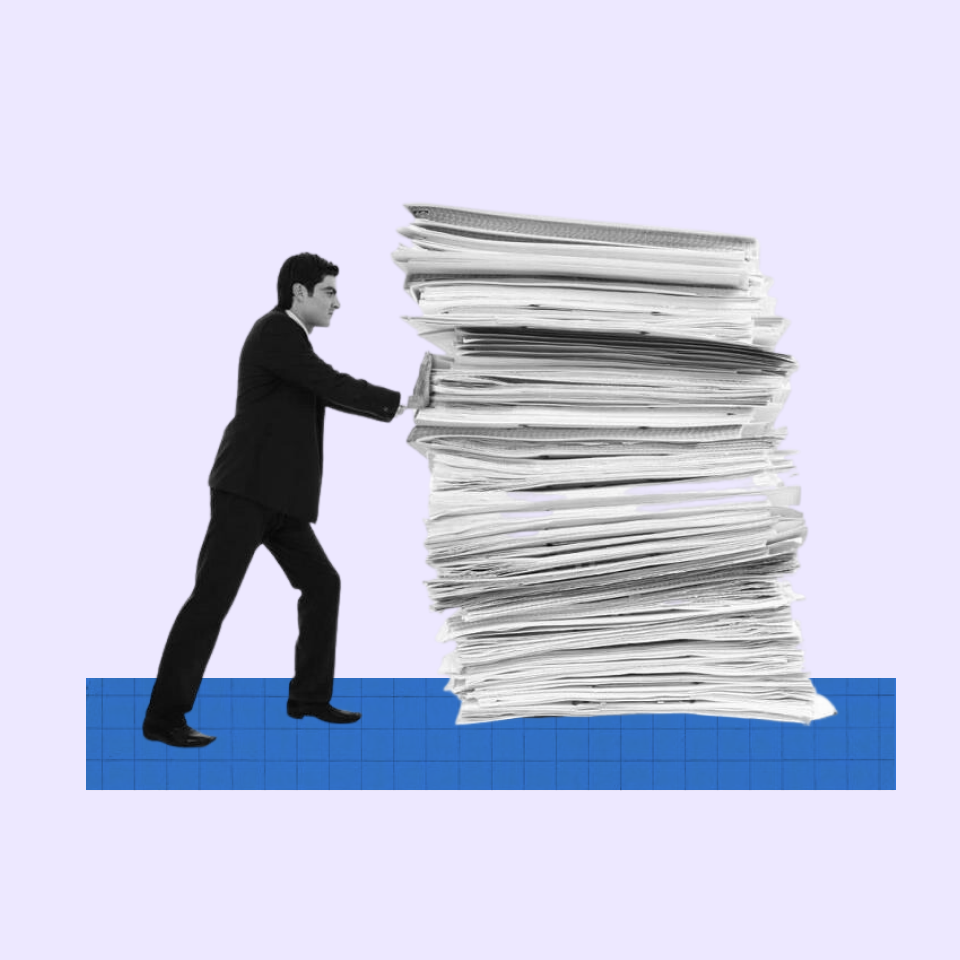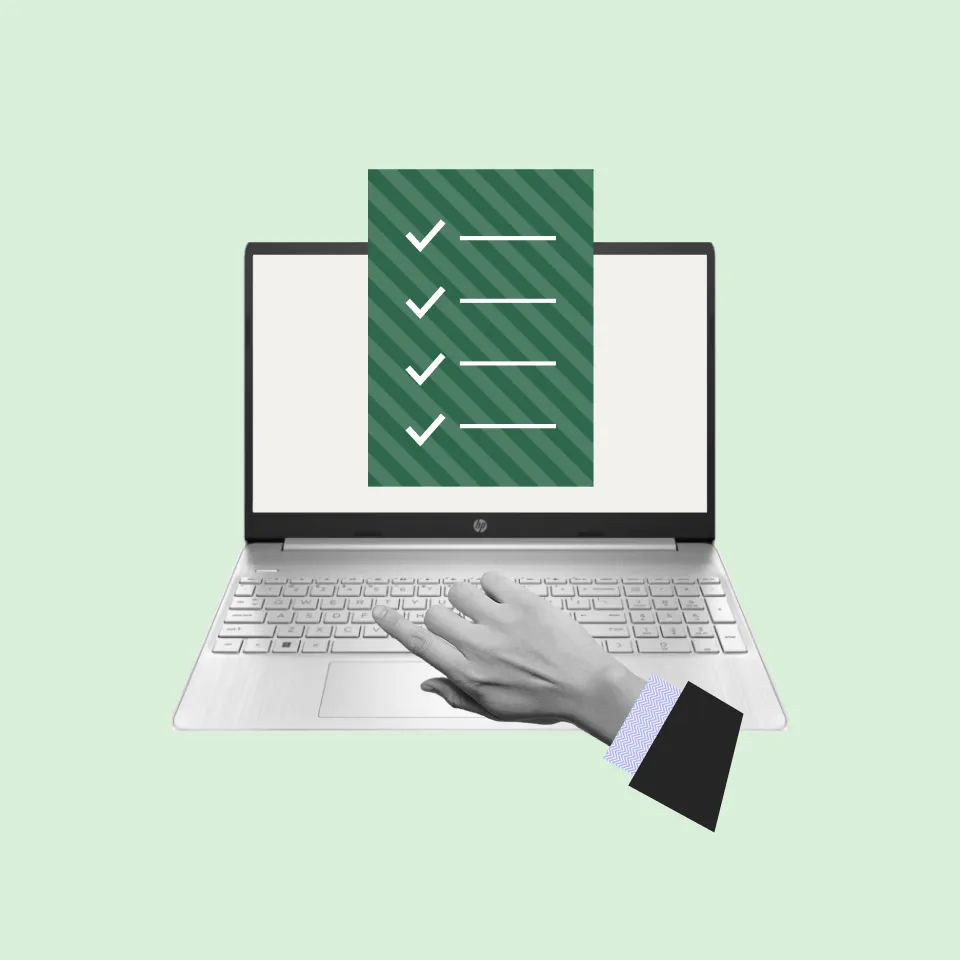Managing energy contracts can feel like juggling while riding a unicycle. From negotiating terms and conditions to ensuring compliance with regulatory standards, you have to maintain perfect equilibrium on that unicycle. One misstep, and the whole act comes crashing down.
It's no wonder things get wacky. Add in the high contracting costs, confusing jargon, and slow legal processes, and you've got yourself a real circus!
Unless, of course, you know your fair bit about contract management, energy contracts, negotiations and all that jazz. If you're already well-versed in energy contracts, we've got some advanced tips and strategies in here for you. And if you're a newcomer to this wild circus, don't worry—we've got you covered too.
This guide explains everything you need to know to start managing your energy contracts like a pro.
What is energy contract management?
Energy contract management means ensuring an energy contract has all the important details, like how much electricity you need, how long the agreement lasts, and how much it will cost.
It involves effectively managing, negotiating, and administrating contracts between energy buyers (such as businesses, organizations, or individuals) and energy suppliers (such as utility companies or energy service providers).
But it's not just about creating the contract. Energy contract management also involves keeping track of important dates, ensuring the contract is fair, and protecting your interests. That means understanding all the terms and conditions and negotiating with the energy provider if needed.
The goal is to ensure that energy contracts align with the needs and goals of the energy consumers while mitigating risks, maximizing cost savings, and maintaining compliance with regulatory requirements.
Key elements of energy contracts

Energy contracts are an integral part of the energy trading industry. They define the rights, obligations, and terms of the agreement between the energy buyer and the energy supplier.
Meaning, if you’re going to have a smooth contract lifecycle, you need to get your energy contract right. To do that, you must have the key elements of an energy contract covered. These elements provide clarity and structure to the contractual relationship and include:
#1 Parties
The energy contract identifies the parties involved, clearly stating the names and contact information of the energy buyer (consumer) and the energy supplier.
#2 Scope of agreement
This section outlines the specific products or services the contract covers, such as electricity, natural gas, or renewable energy, and may specify the required quantity or capacity.
#3 Pricing and payment terms
The contract establishes the agreed-upon pricing structure, whether it's a fixed rate, variable rate, index-based pricing, or other pricing mechanisms. It also outlines the payment terms, including invoicing, billing cycles, and accepted payment methods.
#4 Contract duration
The contract specifies the start date and end date of the agreement, indicating the duration for which the contract is valid. It may also address provisions for contract renewal or termination.
#5 Delivery obligations
This element defines how and where the energy will be delivered to the buyer, including details on transmission, distribution, and any associated charges or responsibilities.
#6 Performance and service level agreements
These clauses outline the expected performance standards, quality of service, reliability, and uptime commitments of the energy supplier.
#7 Termination and renewal
The contract includes provisions for terminating the agreement, specifying the conditions, notice periods, and any applicable penalties. It may also address automatic renewal or renegotiation options.
Also read: Automatic Renewal Clauses: How to Mitigate Risks and Protect Your Interests
#8 Force majeure and risk allocation
This section outlines circumstances beyond the control of the parties that may excuse or delay performance, such as natural disasters or regulatory changes. It also addresses how risks and liabilities are allocated between the buyer and supplier.
#9 Dispute resolution
The contract may include mechanisms for resolving disputes, such as arbitration or mediation, and establish the jurisdiction or governing law applicable to the contract.
#10 Confidentiality and data protection
If relevant, the contract may include provisions related to protecting sensitive information and compliance with data privacy regulations.
Note that the specific terms and details of the energy contract will vary depending on the jurisdiction, industry, and the nature of the energy transaction.
It’s important to know some of these elements so you don’t leave them out of your contract. Missing key elements in an energy contract leads to confusion, disputes, and financial/operational risks; these are problems that’ll hit your bottom line hard.
Instead, you need clear provisions in your contract. This way, you avoid misunderstandings; and when you do have issues, you have a system to quickly resolve them.
It’s no surprise trying to tie all these details down and managing your energy contracts proves to be a pickle. So, if you’re having a hard time, know you’re not alone - these woes are universal.
Challenges in energy contract management
One big hurdle in energy contract management is the sheer complexity of the energy industry itself. With its diverse stakeholders, intricate regulations, and ever-changing market dynamics, staying on top of things requires some serious know-how.
To make matters more chaotic, energy contracts are rarely a two-player game. Instead, you have multiple parties (buyers, suppliers, regulators, etc.) with a stake in the game. To align their interests, meet their requirements, and navigate through their obligations, you need to perform a balancing act and that requires great skill.
The long-term nature of energy contracts presents its own set of challenges too. Energy projects, such as power plant construction or renewable energy installations, often span several years from inception to completion. During this extended period, external factors such as regulatory changes, market volatility, or technology advancements can significantly impact contract performance and financial outcomes.
Legal and regulatory processes also contribute to the challenges in energy contract management. Energy contracts typically involve extensive legal documentation, review processes, and compliance requirements. These procedures can be time-consuming, leading to delays in contract execution and potential bottlenecks in contract management workflows.
Plus, the energy landscape is always in motion. The transition towards cleaner and more sustainable energy sources, emergence of new technologies, and evolving regulatory frameworks create uncertainties and require continuous adaptation in energy contract management practices.
On top of that, there are way too many automated contract lifecycle management tools on the market right now (you can find 80+ on G2 alone). While these tools aim to help, finding the right one only adds more work to your process. And even when you do find one, you now have to start climbing that learning curve. Whew.
Does that mean efficient energy contract management is a futile endeavor, then? Absolutely not.
Best practices for energy contract management

By setting high standards and implementing best practices, you can take control of your energy contracts and optimize their outcomes.
#1 Conduct comprehensive contract reviews to identify risks
Before you put pen to paper, doing your homework is important. This means taking the time to carefully review the contract. You want to make sure you understand all the terms and conditions, what each party is responsible for, and if there are any potential risks or uncertainties.
By conducting a thorough contract review, you can make sure the agreement matches your objectives and safeguards your interests. It's like doing your research before making an important decision. You want to be confident that the contract is fair, reasonable, and will help you achieve your goals without surprises down the road.
You can go one step further by involving legal experts early on. They're your knowledge base, really - they know all the legal stuff inside out.
By having them on board from the beginning, they can provide guidance and make sure everything is legally sound. This way, you avoid any potential issues or complications down the road.
Also read: The Perfect Contract Review Checklist - SpotDraft
Also read: 8 Top Contract Management Software Platforms
#2 Optimize contract processes to save time and money
“First, I worked on setting up contract templates and contracting guidelines that every lawyer in the team dealing with contracts must use and follow. Doing so, we were able to bring in a lot of order to the system.”
~ Bhavna Singh, GC & DPO, Subex Limited
Fostering Transparency and Accountability in Large Tech Enterprises
You don’t want too many workflows in your contracting processes. They waste time and develop silos in your operations. Soon, enough, your whole process will have holes in it and hinder productivity.
What you want to do instead is to standardize your contract templates and clauses. This way, you close deals 2x faster, enhance consistency throughout your contracting processes, and minimize errors.
Templatizing your processes isn’t hard to pull off. Especially if you use a contract management tool, like SpotDraft, with a templating feature. SpotDraft allows you to convert your pre-existing library of contracts on Microsoft Word into reusable templates in just a few clicks.
Better still, you can start from scratch and have a fitting contract in minutes using SpotDraft. And this way, you don’t have to wait for a vendor to do it. SpotDraft pulls data from your CRM, HRM, and other business tools to create the right contract for each client. No hassle, just click, click, type, and boom.
#3 Go digital with esignatures
With eSignatures, you can sign and exchange documents electronically, eliminating the need for physical paperwork and manual processes. This saves time, reduces costs, and increases productivity.
In fact, SpotDraft users lower contracting costs by 95% after going digital with signatures.
eSignatures also provide strong security measures to protect the integrity and authenticity of signed documents, ensuring legal compliance. So ultimately, you get a simplified contract signing process, enhanced workflow efficiency, and ability to operate more seamlessly in the digital age.
Also read: From Paper to Pixels: Persuading Clients to Embrace E-Contract Signatures
#4 Boost communication and collaboration to prevent misunderstandings
Keep your contract management team on the same page with regular check-ins and open lines of communication. By sharing documents and updates, you'll enhance collaboration and prevent any misunderstandings.
And, by all means, make everything plain from the get-go. That means, drop the lingo and write out your contract in simple language so there’s no confusion.
“Unless you are preparing a resume to work at the summer Shakespeare festival, lose the ‘Olde English’ and Latin phrasing when drafting a contract. While not always possible, try to write a contract like a normal person would write something. Avoid unnecessary complexity and shoot for short sentences.”
~ Sterling Miller, CEO of Hilgers Graben PLLC
Ten Things: Making Contracts Easier to Sign
Pro tip: Choose a clear communication channel between you and your energy supplier. This ensures that both parties can promptly address concerns, resolve issues, and maintain a mutually beneficial relationship.
For instance, if you do the grunt of your communications on Gmail, let your supplier know. You can then pass all messages through here (and contracts too). For SpotDraft users, sending contracts without leaving the Gmail inbox is easy. With just a few clicks, you can easily save new and revised contracts to your SpotDraft account.
#5 Educate and empower teams to maximize efficiency
If you want better contract management, you need better education too. Meaning, you have to invest in training programs for your contract managers. That’s how they’ll learn the best ways to handle energy contracts.
They will learn about the latest and most effective methods, legal rules, and trends in the industry. This training will help them better negotiate deals, spot potential problems, and take advantage of opportunities in the energy field.
Besides training, start giving your contract manager access to contract management tools or industry resources and legal advice. These resources will help them work more efficiently, save time, and stay updated about rules and the energy market changes.
#6 Mitigate risks strategically to safeguard your interests
“Get in fast, flag the biggest risks, manage those risks, and move on to the next thing.”
~Jonathan Franz, Head of Legal, Crunchbase
Navigating Economic Turbulence and Thriving in Chaos
Don't let risks sneak up on you. Include clauses in your contracts that transfer risk, ensure adequate insurance coverage, and guarantee performance. This shields all parties involved and safeguards your interests.
For instance, you can negotiate bandwidth clauses to manage fluctuations in energy demand, pass-through charges for transparent billing, add-drop clauses for flexibility, force majeure provisions to address unforeseen events, and dual billing arrangements for multi-utility supply.
#7 Embrace contract management software to automate repetitive tasks
If you want to better manage your contracts, you need top-notch contract lifecycle management (CLM) software. These tools offer centralized storage, version control, and automated workflows, saving you time and simplifying contract management.
Our top pick? SpotDraft, of course. Here’s a short story on why:
Taylor, a contract manager at PostScript, used to struggle with repetitive contract management. She dealt with piles of contracts, missed deadlines, and outdated templates. Collaboration was challenging, compliance was time-consuming, and generating reports was a hassle.
She found SpotDraft in her search, and according to Taylor, her contract workflow has been transformed. She now creates contracts easily using standardized templates, receives automated alerts for important dates, and enjoys a centralized contract repository. Collaboration is seamless, compliance is streamlined, and generating comprehensive reports is effortless.
“SpotDraft streamlines our workflows so we can focus on true legal requests, not the repetitive general requests that can be resolved via standard fallbacks and appropriate approvals. Everything simply works, the team is open to feedback, and the team is constantly improving the product!”
~ Taylor Smith, Contract Manager, PostScript
Here’s what you get from SpotDraft:
- Centralized contract repository: Top-tier enterprises achieve a remarkable 77% savings on contract storage through centralized repositories. That says `a lot. A robust and secure repository to store all contract documents and related information in a centralized location for easy access and retrieval.
.png)
- Contract tracking and reminders: Automated tracking of contract milestones, deadlines, and important dates to ensure timely action and compliance.

- Document generation and version control: Tools to create and manage contract documents, as well as track revisions, changes, and versions.

- Collaboration and workflow automation: Features that enable seamless collaboration among internal stakeholders and external parties involved in the contract process. Workflow automation capabilities can streamline approval processes and ensure efficient contract management.

- Reporting and analytics: Advanced reporting functionalities to generate insights, monitor contract performance, and make informed decisions.

- Integration capabilities: The ability to integrate with other systems and data sources, such as accounting or procurement systems, to streamline data flow and enhance overall operational efficiency.
Simplify contract management for your business with SpotDraft
You want to go from contract request to closure faster and easier - who doesn’t? With SpotDraft, you can significantly reduce contract turnaround time, ensuring faster deal closure and peace of mind.
Our customers have seen 2x faster deal closing time and even 95% cost savings compared to manual review. The best part? You don't need any technical expertise to set it up and use it. The platform has intuitive and user-friendly, so anyone can start chipping away.
Once your contracts are ready for execution, SpotDraft takes care of the entire signing process. It automatically sends contracts to key stakeholders for sequential signatures, eliminating the need for manual follow-ups and delays.
SpotDraft even includes built-in email reminders, sending follow-up messages every two days for contracts that haven't been executed. This proactive approach ensures that contracts move forward smoothly and minimizes the chances of stalled agreements.
Of course, you don’t have to jump the gun here. The best way to learn if SpotDraft is the software for you is to try it out. You can request a demo today to see SpotDraft in action.


.avif)







